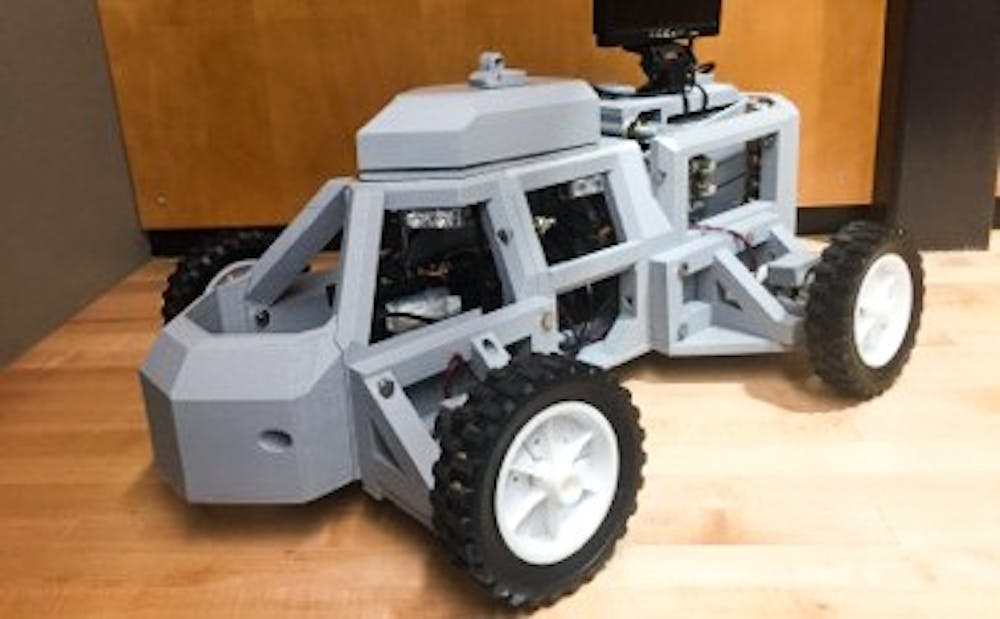Two Duke students recently designed a robot to help police officers perform routine traffic stops.
Ph.D. candidate Chris Reyes and senior Vaibhav Tadepalli met while working in the same lab in 2014 and have collaborated previously on startup ventures. They came up with the idea for the robot, called Sentinel, in July 2016 in response to several violent interactions between police and motorists.
"We looked at each other and said, 'There's got to be a better way to do this because this is clearly a problem. There needs to be a safer alternative that allows everyone to walk away alive,'" Tadepalli said.
The robot they designed is able to drive itself over to a stopped vehicle autonomously, lift a screen up to window level and initiate a two-way video chat between an officer and the vehicle's driver. Tadepalli likened it to a Skype call, but added that the officers still have a 180 degree view into the vehicle, just as they would if they were standing at the window themselves.
Sentinel's wide-angle camera can read and scan license plates, driver's licenses and registration forms before sending that information to the officer's dashboard computer.
"We're making it very secure, so that none of the information is saved or stored on the robot, and everything is sent straight to the cop's computer for processing," Reyes said.
Reyes and Tadepalli stressed that their robot is for information collection and communication and does not have the intelligence to make decisions on its own. Although Sentinel has the capability to issue tickets digitally, its creators intend for it to simply act as a buffer to keep both officers and civilians safe, not as a substitute for police officers themselves.
"We're not trying to take a job away, we just want to make it easier and safer for the person who does that job," Reyes said.
The duo has been using the Duke Innovation Co-Lab to design and 3D print most of their robots' parts. This technology has allowed them to quickly develop new versions of Sentinel based on feedback from a local police department and keep costs down. While other police robots might cost at least $20,000, Reyes and Tadepalli plan to market Sentinel for approximately $10,000.
"We want to keep costs low to put Sentinel on as many vehicles as we possibly can, to make the impact as big as we possibly can," Tadepalli said.
Sentinel, now in its fifth iteration, is still undergoing simulation testing, and Reyes said he hopes to begin field-testing in the next few months. The students are now using a grant from the Innovation Co-Lab to give Sentinel the same senses a police officer would have while at the window of a stopped vehicle—including the ability to detect alcohol, marijuana smoke and explosives. They are also working on giving the robot capabilities an officer would not have, like thermal imaging software to detect objects' infrared radiation.
The pair recently advanced to the second round in the Duke Startup Challenge. They said they hope that Sentinel will be fully developed and ready for implementation in police departments by January 2018.
"We're passionate about this particular product because we see that if we can get it deployed, we can save lives," Tadepalli said.
Get The Chronicle straight to your inbox
Signup for our weekly newsletter. Cancel at any time.

